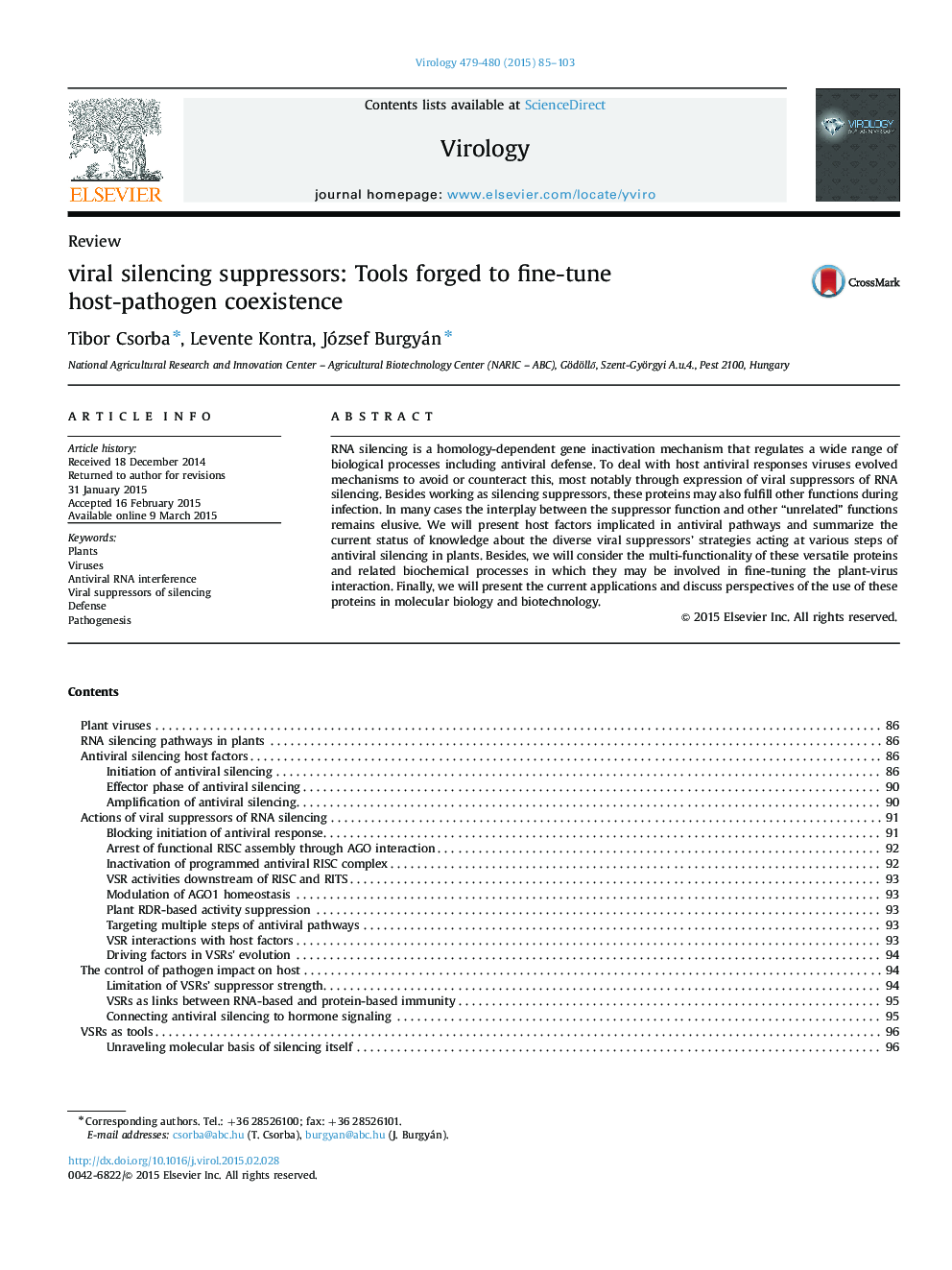| Article ID | Journal | Published Year | Pages | File Type |
|---|---|---|---|---|
| 6139168 | Virology | 2015 | 19 Pages |
â¢We discuss the antiviral function of RNA silencing and the host factors implicated.â¢We summarize the status of knowledge about the viral suppressors' strategies.â¢We consider the multi-functionality of VSR proteins.â¢We present connections between RNA-based and other types of antiviral defense.â¢Finally, we will present the current applications of VSRs.
RNA silencing is a homology-dependent gene inactivation mechanism that regulates a wide range of biological processes including antiviral defense. To deal with host antiviral responses viruses evolved mechanisms to avoid or counteract this, most notably through expression of viral suppressors of RNA silencing. Besides working as silencing suppressors, these proteins may also fulfill other functions during infection. In many cases the interplay between the suppressor function and other “unrelated” functions remains elusive. We will present host factors implicated in antiviral pathways and summarize the current status of knowledge about the diverse viral suppressors' strategies acting at various steps of antiviral silencing in plants. Besides, we will consider the multi-functionality of these versatile proteins and related biochemical processes in which they may be involved in fine-tuning the plant-virus interaction. Finally, we will present the current applications and discuss perspectives of the use of these proteins in molecular biology and biotechnology.
